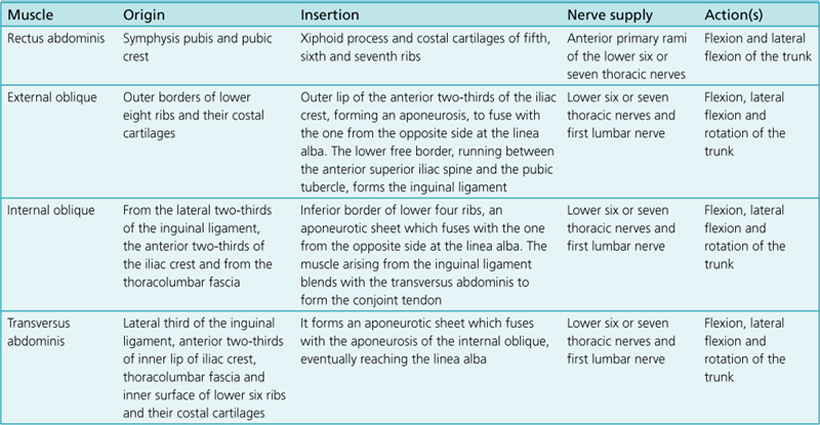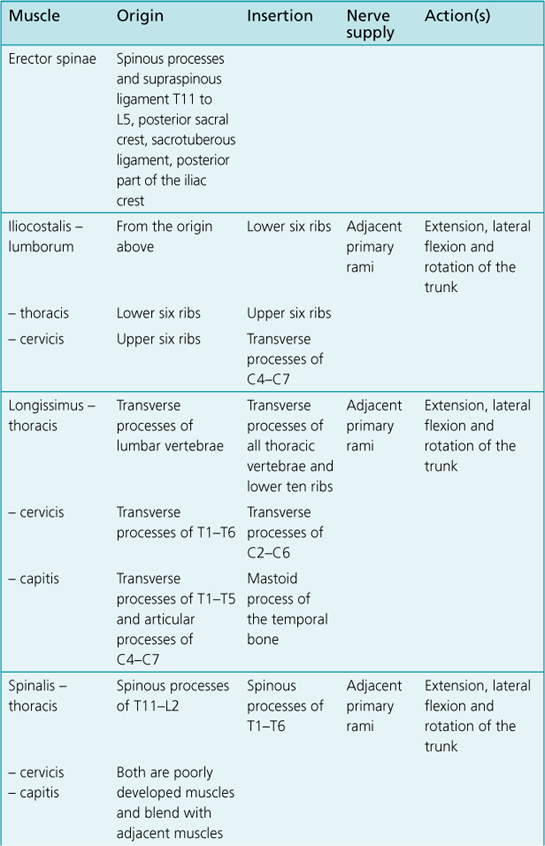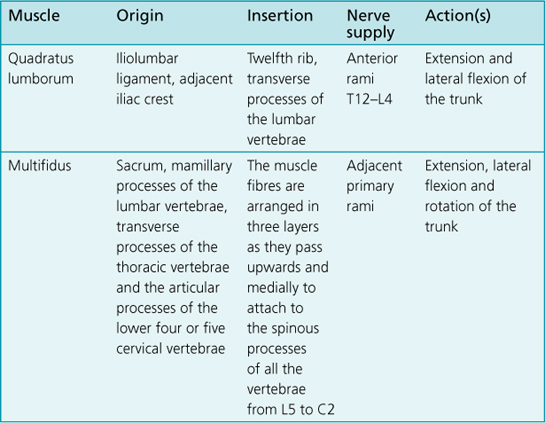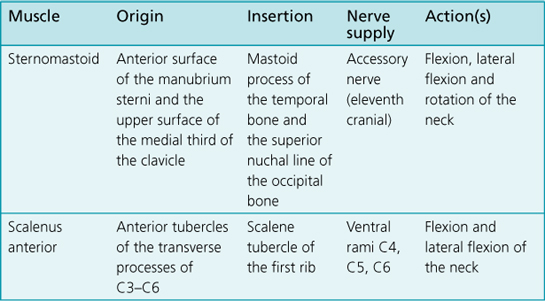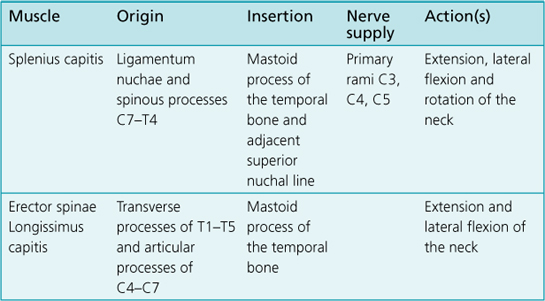Chapter 8 The spine
Anatomy
3. The intervertebral discs are composed of fibrocartilage and comprise one-quarter of the total length of the vertebral column.
4. Individual discs are wedge shaped, in conformity with the curvature of the vertebral column in the region of the disc.
5. Therefore, curvatures in the cervical and lumbar regions are due to the greater anterior thickness of disc.
6. Shapes of disc: cervical – oval, thoracic – heart shaped, lumbar – kidney shaped. Posteriorly, the vertebral bodies are united by synovial, plane joints – zygapophyseal/facet joints. The shape and orientation of the joint surfaces vary in the three regions.
7. In the cervical spine the articular surfaces are flat and oval and lie in an oblique plane. Movements: flexion, extension, lateral flexion (side flexion) and rotation.
8. In the thoracic spine the articular surfaces on the superior processes project almost vertically. Movements: flexion, extension, lateral flexion and rotation.
9. In the lumbar spine there are strong articular processes that have a marked upwards and downwards projection. Movements: flexion, extension and lateral flexion.


